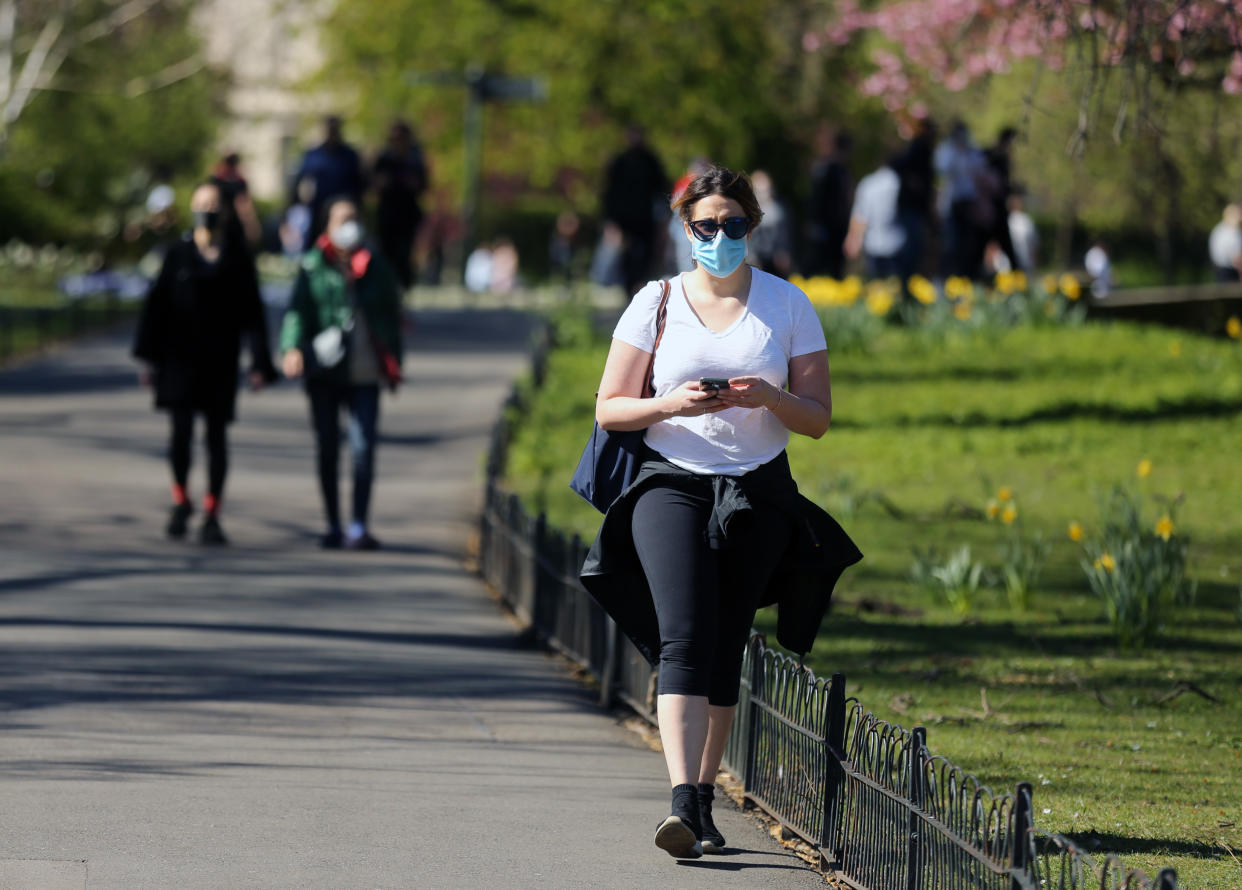Coronavirus: Number of people with COVID-19 hasn’t changed following ease of lockdown, new data shows


An average of 0.24% of people in the community had COVID-19, or about 133,000 people in England, at any given time between 11 and 24 May, Office for National Statistics (ONS) data shows.
This is similar to the amount found in its survey announced last week, which found 132,000 were infected at any time between 27 April and May 10.
This indicates the number of people infected has been relatively stable despite lockdown having been eased slightly in England on 13 May.
The figures come from the ONS’s infection survey, and the latest batch of findings was published on Thursday afternoon. The findings relate only to England.
The data also shows that of those who provided blood samples, 6.78% tested positive for antibodies to COVID-19, about one in 15 people, although this sample of individuals was not weighted to represent the population.
It relied on test results from 885 people since the start of the ONS’s infection study on 26 April.
Less than a quarter of people surveyed who tested positive for COVID-19 said they had symptoms on the day they were tested, the figures show.
Just 21% said they displayed indications of coronavirus infection at that point, while 30% of those studied who tested positive for COVID-19 said they displayed symptoms at any point during the ONS’s study period.
However, this was based off a sample of just 87 people.
The ONS also estimated that 54,000 new COVID-19 infections happened every week in England, similar to previous estimates.
This equates to about 0.1 new cases per 100 people.
Its findings show that there is no evidence of differences in the percentage of men and women testing positive for COVID-19.
However, there is “some evidence that the 20 to 49-year-olds in the community may have a slightly higher rate of positive testing than 50 to 69-year-olds in the community”, the ONS said.
A total of 1.73% of doctors and nurses in the NHS and social care workers tested positive, while people not working in those types of roles tested positively at 0.38%.
Workers whose jobs are outside the home have higher rates of positives tests than those who can work in their own houses, the figures show.
Of the respondents in the infection survey, just 2.62% who experienced one or more of the symptoms of COVID-19 tested positive, compared to 0.35% who had one or more symptoms at the time of being tested.
The study has contacted 20,000 households, of which 9,904 have been enrolled so far.
Coronavirus: what happened today
Click here to sign up to the latest news, advice and information with our daily Catch-up newsletter
Read more about COVID-19
How to get a coronavirus test if you have symptoms
What you can and can’t do under lockdown rules
In pictures: How UK school classrooms could look in new normal
How public transport could look after lockdown
How our public spaces will change in the future
Help and advice
Read the full list of official FAQs here
10 tips from the NHS to help deal with anxiety
What to do if you think you have symptoms
How to get help if you've been furloughed


